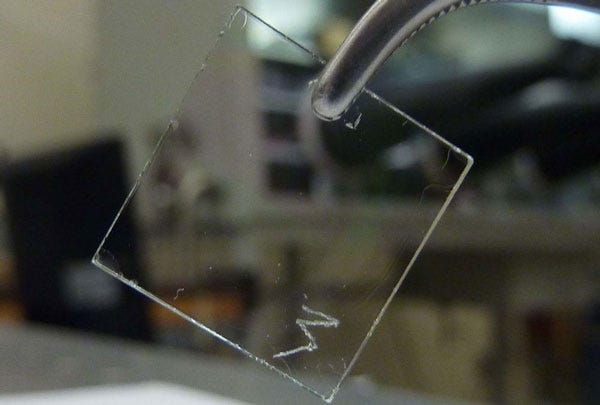Scientists Unveil World's Fastest Organic Transistors
January 13, 2014
Two university research teams, one from Stanford University and the other from the University of Nebraska-Lincoln (UNL), have reportedly developed the world's fastest thin-film organic transistors. This experimental technology has the potential to achieve the performance needed for transparent high-resolution displays, television screens, sensor arrays, and related electronic devices.
In "Ultra-High Mobility Transparent Organic Thin Film Transistors Grown by an Off-Centre Spin-Coating Method," published on January 8 in Nature Communications, the authors show how they created thin-film organic transistors that operate more than five times faster than previous examples of this experimental technology.
|
|
The research teams were led by Zhenan Bao, professor of chemical engineering at Stanford, and Jinsong Huang, assistant professor of mechanical and materials engineering at UNL. The researchers used their new process to make organic thin-film transistors with electronic characteristics comparable to those found in silicon-based technology.
Learn about cutting-edge electronics developments at Electronics West, an exposition held February 11-13 in tandem with MD&M West in Anaheim, CA. |
Their breakthrough was achieved by modifying the basic process for making thin-film organic transistors. Usually the precursor solution, which contains carbon-rich molecules and a complementary plastic, is deposited onto a spinning glass platter. The spinning action causes the solution to evenly spread across the surface of the platter. In their paper, the researchers describe two important changes to this basic process.
First, they spun the platter faster. And second, they only coated a tiny portion of the spinning surface, equivalent to the size of a postage stamp. These innovations, say the researchers, had the dual effects of depositing the organic molecules both in a denser concentration and in a more regular alignment. The result is a great improvement in carrier mobility, which is a measure of how quickly an electrical charge travels through the transistor.
The researchers call their improved method "off-center spin coating." Although they cannot yet precisely control the alignment of organic materials in their transistors or achieve uniform carrier mobility, already off-center spin coating has produced transistors with speeds much faster than those of previous organic semiconductors.
Further improvements to this experimental process could lead to the development of inexpensive, high-performance electronics built on transparent substrates such as glass and, eventually, clear and flexible plastics. Already, the researchers have shown that they can create high-performance organic electronics that are 90 percent transparent to the naked eye.
Their work was funded by the U.S. Defense Advanced Research Projects Agency (DARPA), the Air Force Office of Scientific Research and the National Science Foundation.
About the Author(s)
You May Also Like



.png?width=300&auto=webp&quality=80&disable=upscale)
